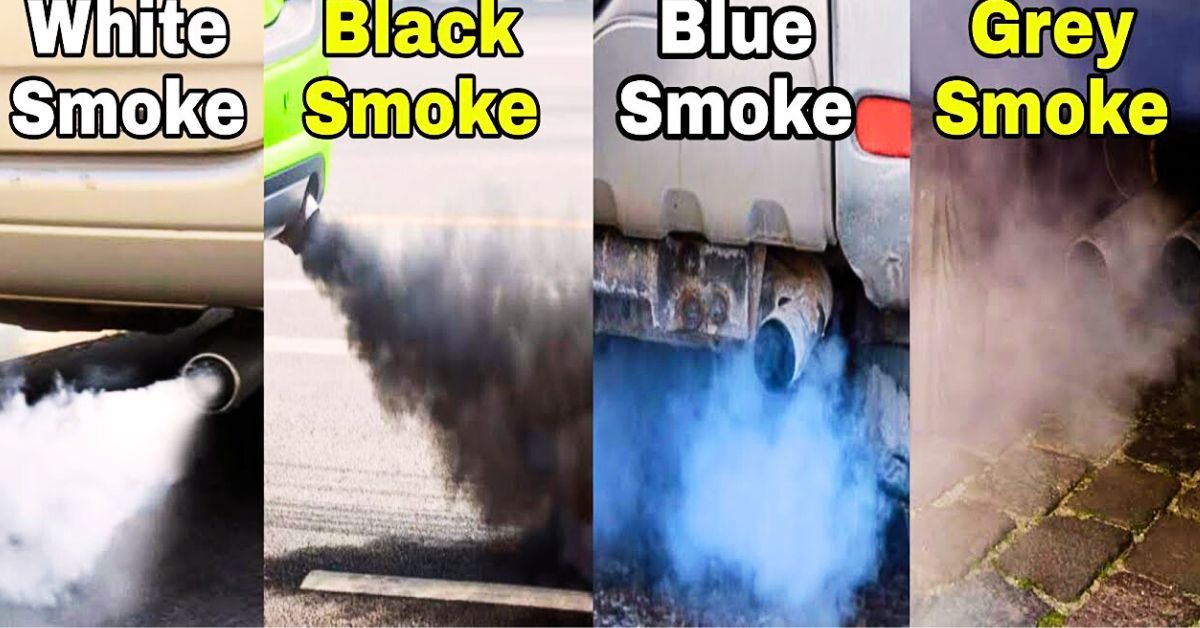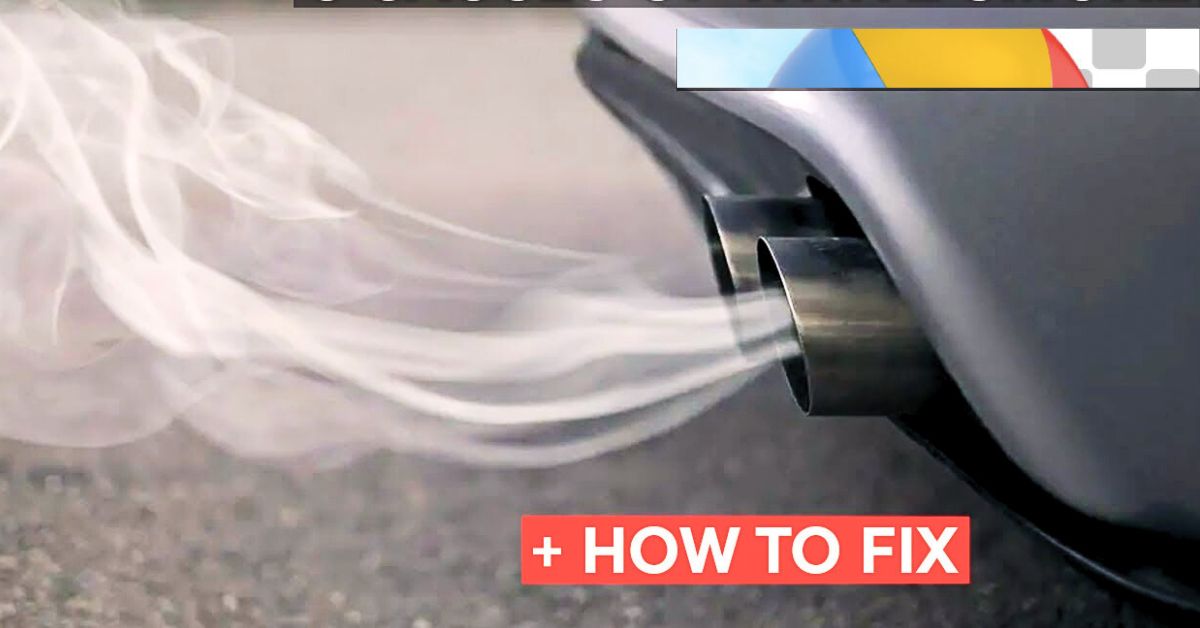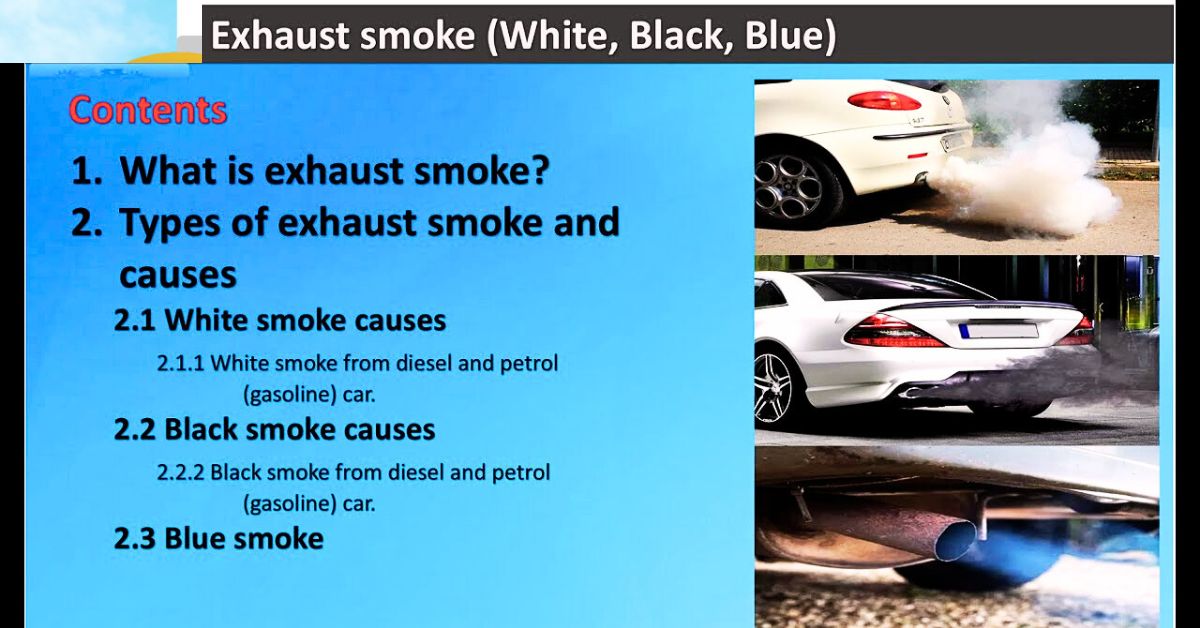White smoke is a warning sign you shouldn’t ignore. When you start your car and see white smoke from the exhaust, it often points to an underlying issue.
It might be something minor, like condensation, or it could mean serious engine trouble. Knowing the difference is critical.
This guide helps you understand the causes of white smoke, what each one means, and how you can fix them. Read on to keep your car running smoothly and safely.

Common White Smoke Causes
White smoke usually means coolant is entering the combustion chamber. Here are the most common reasons:
- Blown head gasket
- Cracked engine block
- Leaking cylinder head
- Faulty fuel injector (in diesel engines)
- Cold start condensation
Each of these issues requires a different fix. Some are simple; others need expert help.
Blown Head Gasket Symptoms
A head gasket seals the engine block and cylinder head. When it blows, coolant mixes with fuel and air.
Warning signs:
- Sweet smell from exhaust
- Engine overheating
- Milky oil on dipstick
This is a serious issue. Ignoring it may cause engine damage. Have it inspected immediately.
Cracked Block vs. Head
Both cracks lead to white smoke, but they differ in location.
- A cracked engine block usually leaks externally.
- A cracked head lets coolant enter the combustion chamber.
Fixing either is expensive. It may require engine replacement or machine shop repair.
Cold Start Smoke Normal?
Not always. In cold weather, white smoke may be just water vapor. It disappears after a few minutes.
If it lingers or smells sweet, it’s likely coolant. That’s a red flag.
Diesel Engine White Smoke
White smoke in diesel engines can be from:
- Incorrect injector timing
- Poor fuel quality
- Faulty glow plugs
Diesel white smoke often means unburned fuel or moisture. It’s best diagnosed by a mechanic.
Temporary vs. Persistent Smoke
How long does the smoke last?
- Temporary smoke after startup = Normal condensation
- Persistent smoke = Coolant or fuel issue
Monitor your car’s behavior. Take notes of when and how often the smoke appears.
Fixing White Smoke Issues
Basic DIY fixes:
- Replace worn gaskets
- Flush the cooling system
- Use sealant for minor leaks
Professional help for:
- Engine rebuilds
- Cylinder machining
- Injector system repairs
Don’t delay repairs. The longer you wait, the more costly it becomes.
White Smoke and Overheating
White smoke often goes hand-in-hand with engine overheating. Watch your temperature gauge closely.
Overheating causes metal parts to expand, creating more leaks. Immediate attention can save your engine.

Coolant Leak Diagnosis
To check for leaks:
- Look under the vehicle after parking
- Check the coolant reservoir regularly
- Use a pressure tester on the radiator
Early detection prevents engine failure.
Engine Misfire and Smoke
A misfire can accompany white smoke. It feels like shaking or stuttering while idling or accelerating.
This combo may mean coolant in the combustion chamber, disrupting the spark.
Repair Cost Breakdown
Estimated repair costs:
- Head gasket: $1,000–$2,000
- Cracked head/block: $2,000–$4,000
- Fuel injector repair: $300–$700
Get multiple quotes before proceeding. Ask for a full diagnosis report.
Prevention and Maintenance Tips
Keep your car in top shape:
- Check coolant monthly
- Avoid running engine hot
- Change oil on schedule
- Use quality fuel
Simple habits prevent costly damage.
Related Issues and Myths
Myths:
- “White smoke is always harmless.”
- “Just add more coolant.”
Truth:
- White smoke often signals engine issues.
- Adding coolant only masks the problem.
When to See a Mechanic
Don’t wait if you notice:
- Smoke lasting more than five minutes
- Overheating alongside smoke
- Sweet smells or low coolant
A mechanic can test compression and pressure to confirm the root issue.
Helpful Resources
For more expert advice:
Conclusion:
White smoke can mean many things. From harmless condensation to serious engine problems, recognizing the signs matters.
Use this guide to check symptoms, track causes, and plan repairs. A prompt response could save you thousands.
When in doubt, get professional help.










